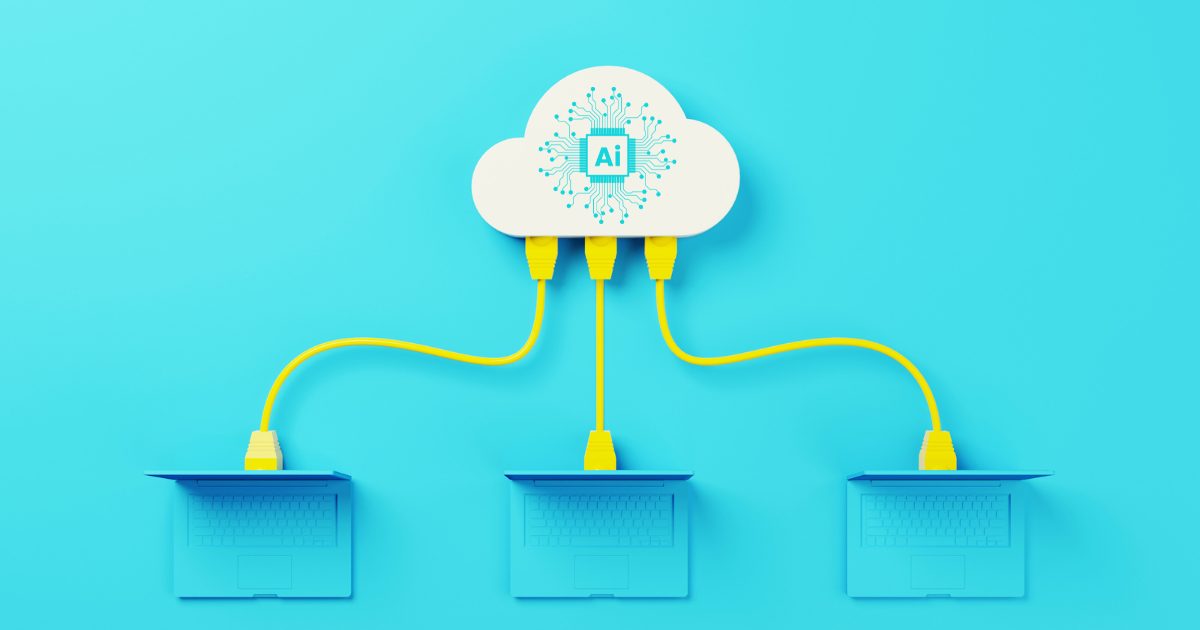In this fast-paced world of information technology, staying ahead is not just a goal but a necessity. CIOs, CTOs, and IT managers need to plan well and utilize the limited budgets in their hands wisely and efficiently to navigate the complex and constantly changing technological landscape. Your IT roadmap should not only align with your organization’s business objectives, but also be a catalyst for your organization’s growth and transformation. IT is more than just a department; it is an underground lifeline that connects and powers all the other departments in a company and is indispensable for their functioning and growth.
In this blog, we outline the seven key focus areas to build your IT roadmap to help you successfully move the company towards innovation and efficiency.
What is your organization looking to achieve in 2024?
Your IT plan should act as a supporting pillar for your overarching corporate goals. Is your company looking to reduce work hours on manual tasks and free up time for employees for more strategic initiatives? Perhaps your organization is focused on growth, and interested in machine learning to gather intent data and buyer insights to increase sales output. Or you may be looking to resolve delays and errors by automating accounting, quality, or other operational procedures. Is your company focused on customer retention? Then planning to enhance the customer experience by making it more dynamic, self-serve and intuitive, could be a key objective. Determining the areas where your company wants to grow, cut costs, or focus will determine crucial parts of your technology strategy.
Is your plan keeping up with technology trends?
IT professionals need to keep themselves updated on emerging technologies to be innovative, maintain competitive advantage and thrive in today’s dynamic market scenario. With all the hype surrounding artificial intelligence, many IT professionals are wondering how AI can help their organization, and how they can adopt this technology.
But you need to look beyond the hype and see which of these AI-powered technologies can drive you faster towards your business goals. According to Gartner the top 10 AI strategy trends for 2024 that should be on the radar for CTOs and CIOs are:
- Democratized generative AI
- AI trust, risk, and security management
- AI-augmented development
- Intelligent applications
- Augmented-connected workforce
- Machine customers
- Continuous threat exposure management
- Sustainable technology
- Platform engineering
- Industry cloud platforms
It can be difficult to translate all of the AI information out there into a tangible strategy. When building your plan, look to other organizations’ success stories to understand common AI use cases for business leaders.
While working on your AI implementation strategy set aside some budget for testing, experimenting, and implementing these new technologies enterprise-wide. For this, you need to have your goals, execution strategy, and return on investment parameters set in advance with a defined timeline for both implementation and expected results.
To make the most of AI, you will need to make sure you have the proper foundation, including common data models and appropriate data management. Without this, you can havelacklusterr results, data security concerns, and shadow IT. If you are not sure whether your organization is ready for AI – or other technology trends – Elantis can help you get there.
Is your plan focusing on outdated processes and workflows?
For your 2024 plan, you need to take stock of the areas or processes where technology can streamline operations, automate tasks, and enhance productivity. Identifying the time-consuming, error-prone, inefficient processes, and automating them can help your organization not only save costs but double the output. Overhauling or migrating from old outdated systems, and platforms takes up a lot of time, effort, and money and can be quite messy. The first step is to look at your technology stack and check what can be re-used, what needs to be updated and what can be added to expand the functionality of existing platforms. This includes but is not limited to creating strategies and investing in platforms for secure cloud migration, process automation, customer experience optimization, and data-driven decision-making to enhance overall business agility and efficiency.
You should also consider implementing low-code/no-code platforms that are empowered by generative AI as they can help you move away from traditional models to more dynamic and intuitive models giving you a competitive edge in the market. A recent McKinsey report detailed the impact of 63 generative AI business use cases that could deliver a total value in the range of $2.6 trillion to $4.4 trillion in economic benefits annually when applied across industries.
So, plan to automate what you can to help your employees focus on what’s important. It also makes sense to leverage digital technology partners like Elantis who understand the current technology trends and have proven expertise in the field of automation to help you execute these large-scale projects.
Are you ready for new trends in cloud computing in 2024?
Worldwide, spending by businesses on cloud computing infrastructure is for the first time forecasted to top $1 trillion in 2024. In the coming years, the cloud will continue to be a dynamic and exciting driver of innovation and opportunity. Cloud technology can play a big role in making AI easily available and accessible to companies. Most companies don’t have the computing power to process large amounts of data required for AI models like LLM (Large Language Model), on which applications like ChatGPT run. But AI-as-service through cloud platforms can be used to leverage this technology.
Also, organizations using multi-cloud environments are predicted to rise from 76% to 85% during 2024. Your plan needs to consider the specific needs of your organization and choose the services that will help you balance security with flexibility and optimum functionality. You may be able to reduce your ongoing application costs for Microsoft 365 compliance and commercial cloud and on-premises environments.
Do you have a plan to improve your cybersecurity resilience?
Given the escalating cyber threats, the roadmap rightfully underscores the importance of cybersecurity. The focus on proactive measures, including AI-driven threat detection and response, is commendable. However, the ever-evolving nature of cyber threats demands continuous innovation. Does your roadmap provide a framework for adaptive cybersecurity strategies that can effectively counter emerging threats and vulnerabilities?
You also need to gain end-to-end visibility into your data and apply comprehensive data protection policies using AI-powered data classification technology, data maps, extensive audit logs and signals, and management experience. You need to have a strategy in place to improve your risk and compliance posture with tools to identify data risk and manage regulatory requirements. It is important to carefully plan governance and compliance solutions to navigate the complex regulatory landscape, mitigate risks, and protect sensitive data.
Do you have a plan to leverage Microsoft Copilot and other AI capabilities?
Does your roadmap have a strategy to get the most from Microsoft 365? Many organizations are exploring how they can use Microsoft Co-pilot across different Microsoft applications to unlock the full potential of Microsoft 365 and expand their organization’s AI-powered productivity, skills, and creativity. Microsoft Copilot will be as pervasive as Windows and as disruptive as the cloud. Microsoft’s recent revolutionary move to include a new Copilot key on a variety of new PCs and laptops shows how unavoidable AI will become. The Copilot key will provide quick access to Microsoft’s AI-powered Windows Copilot experience straight from a single button press. You need to have a plan for how to implement this functionality in your current Microsoft 365 environment to help improve the productivity of your workforce and grow the company’s profits. Are you ready to implement it? There are 7 key requirements to be Microsoft 365 Copilot ready.
Have you planned for skilled IT talent shortage?
Acknowledging the importance of human capital, your roadmap needs to have a robust plan for skill development and workforce transformation. With the rapid evolution of technology, continuous upskilling is crucial. Finding and retaining new IT talent is one of the biggest ongoing problems in the tech industry. 36% of HR leaders say they don’t have the resources to recruit top talent. This has become a significant barrier to the adoption of emerging technologies in companies. Does your roadmap provide a comprehensive plan to address the IT skills gap and ensure that the workforce is adequately equipped for the challenges of tomorrow? Elantis can help you minimize the effort required to find staff while maintaining the quality of talent that you need.
As you scrutinize your 2024 IT Technology Roadmap, it becomes evident that it holds the potential to shape a future where technology is not just an enabler but a transformative force. Success hinges on addressing current challenges and anticipating future ones. By fostering collaboration, innovation, and adaptability, your roadmap can guide your organization toward a future where technology seamlessly integrates into employees’ day-to-day activities, and empowers staff and organizations to thrive in the digital age.
A third-party technology advisor, like Elantis, can provide guidance, and industry insights, and help you choose the right solutions to leverage our 10+ years of IT industry experience to make your 2024 roadmap a success!



























